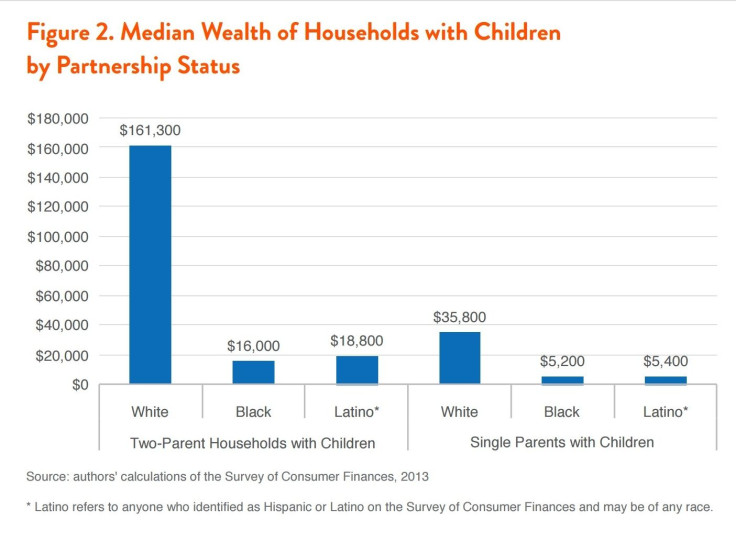Why Are White People Rich? New Study Debunks Myths About Individual Behavior, Personal Achievements

A new study aimed at debunking myths that surround racial wealth gap disparity argues that the structural racism implemented through public policy instead of individual behavior ascribed to a race is the chief reason for the disparity to exist.
Titled “The Asset Value of Whiteness: Understanding the Racial Wealth Gap,” the study was released Monday. It sourced its data from the Survey of Consumer Finances (SCF) from 2013 and has been conducted by researchers at Brandeis University, Massachusetts, and the public policy group called Demos.
“In some ways this report is a myth-buster. It’s looking at popular assumptions and challenging them,” Amy Traub, the associate director for policy research at Demos and co-author of the study, said, according to Bloomberg.
The authors outlined the following as myths surrounding individual behavior:
- Attending college does not close the racial wealth gap

According to the research, the median white adult who attended college has 7.2 times more wealth than the median black adult who attended college and 3.9 times more wealth than the median Latino adult who attended college.
- Raising children in a two-parent household does not close the racial wealth gap

The median white single parent has 2.2 times more wealth than the median black two-parent household and 1.9 times more wealth than the median Latino two-parent household, the study found.
- Working full-time does not close the racial wealth gap

The median white household that includes a full-time worker has 7.6 times more wealth than the median black household with a full-time worker. The median white household that includes a full-time worker also has 5.4 times more wealth than the median Latino household with a full-time worker, according to the study's findings.
- Spending less does not close the racial wealth gap
The average white household spends 1.3 times more than the average black household of the same income group, the research stated.
So if these aren't the causes for racial wealth gap, what are?
The study aims to disconnect racial wealth gap from proposed explanations such as individual life choices and personal achievements. But it does not really prescribe any causal links, just some plausible suggestions. "We haven’t fully penetrated the mystery,” Traub told Bloomberg.
The study suggests that whites are five times as likely as blacks to receive substantial gifts and inheritances. Another portion of the report suggests that public policies such as the GI Bill, "which mostly helped white veterans attend college and purchase homes with guaranteed mortgages," excluded people of color from the same set of opportunities.
This accumulated money “can be used to jump-start further wealth accumulation, for example, by enabling white families to buy homes and begin acquiring equity earlier in their lives,” the study said while noting that this intergenerational wealth continues to provide advantage to its recipients. Traub reportedly noted that the forms of racial discrimination “that happened in the past, like redlining, continue to show up in bank accounts today.”
© Copyright IBTimes 2024. All rights reserved.












